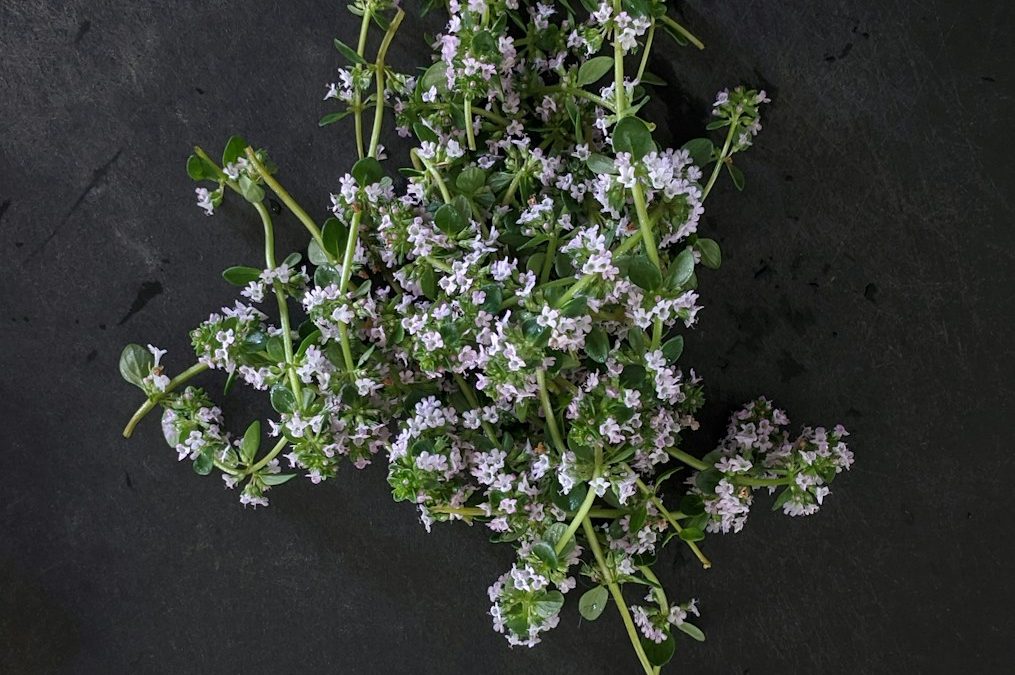Contents
- 1 How to Grow Thyme Indoors (Easy Guide for Fresh Flavor Year-Round)
- 2 Why Grow Thyme Indoors?
- 3 Best Thyme Varieties for Indoors
- 4 Step-by-Step: How to Grow Thyme Indoors
- 5 Common Mistakes to Avoid
- 6 Bonus Tips for Thriving Indoor Thyme
- 7 FAQs About Growing Thyme Indoors
- 8 Final Thoughts on Growing Thyme Indoors
- 9 Related Articles
How to Grow Thyme Indoors (Easy Guide for Fresh Flavor Year-Round)
Growing thyme indoors is a fantastic way to keep your cooking fresh and fragrant all year. Whether you’re an experienced indoor gardener or just starting, thyme is one of the easiest herbs to grow at home. With its compact size, aromatic leaves, and minimal care needs, thyme deserves a place on every sunny windowsill.
Why Grow Thyme Indoors?
There are many great reasons to grow thyme in your indoor herb garden:
Year-round harvest: Fresh herbs even in winter
Culinary versatility: Perfect for soups, stews, and roasted dishes
Aromatherapy benefits: Releases a lovely scent when brushed
Easy to grow: Requires little maintenance compared to other herbs
Best Thyme Varieties for Indoors
While most thyme varieties can grow inside, these are particularly well-suited:
Common Thyme (Thymus vulgaris) – Classic culinary choice
Lemon Thyme – Bright citrus aroma and flavor
Creeping Thyme – Decorative and edible, great for small pots
Step-by-Step: How to Grow Thyme Indoors
1. Choose the Right Pot and Soil
Use a small container with drainage holes
Fill with well-draining potting mix (a mix made for herbs is best)
Try this organic potting mix made for indoor herbs – Check on Amazon
2. Find a Sunny Spot
Thyme loves full sun – place your pot near a south-facing window
If sunlight is limited, use a grow light
This affordable indoor grow light works great – View on Amazon
3. Watering Tips
Water only when the top 1 inch of soil is dry
Avoid overwatering – thyme is drought-tolerant
4. Feeding and Fertilizing
Feed once a month with diluted liquid fertilizer during the growing season
Stop fertilizing during the winter months
5. Pruning and Harvesting
Regular trimming keeps the plant bushy
Harvest sprigs by cutting stems just above a leaf node
6. Repotting and Longevity
Thyme grows slowly and doesn’t need frequent repotting
Refresh the topsoil yearly to keep nutrients strong
Common Mistakes to Avoid
Too much water – leads to root rot
Not enough sunlight – causes leggy, weak growth
No drainage holes – can drown the roots
Over-fertilizing – encourages leafy but less flavorful growth
Bonus Tips for Thriving Indoor Thyme
Rotate your pot every few days so the plant grows evenly
Wipe the leaves occasionally to remove dust and help with light absorption
Use clay pots for better air circulation to the roots
FAQs About Growing Thyme Indoors
Q: Can I grow thyme from grocery store cuttings?
A: Yes! Place a cutting in water until roots form, then transfer it to soil.
Q: How long does thyme take to grow indoors?
A: You can start harvesting light sprigs in about 6–8 weeks after planting.
Q: Can I use thyme for medicinal purposes?
A: Yes – thyme is known for its antimicrobial properties and is used in teas for sore throats and coughs.
Q: How often should I water thyme indoors?
A: Water only when the topsoil is dry; typically once every 7–10 days depending on humidity.
Final Thoughts on Growing Thyme Indoors
Thyme is a resilient, flavorful herb that’s perfect for indoor gardens. Whether you’re growing it for cooking or simply to enjoy its fragrance, thyme thrives with a little sun, dry soil, and occasional pruning. Its easy-going nature makes it an ideal starting point for beginners, while still rewarding experienced gardeners with a continual harvest.
With the right setup and care, your thyme plant can flourish indoors for years. Don’t forget to rotate your pot for even growth and trim regularly to encourage bushiness. From roasted vegetables to herbal teas, your thyme harvest will quickly become a favorite part of your indoor garden routine.
For more expert advice on herb care, check out this helpful RHS thyme growing guide.

